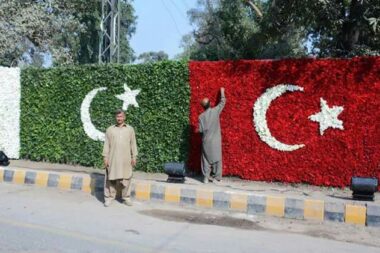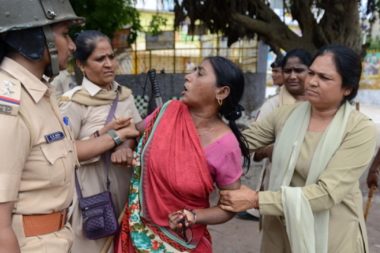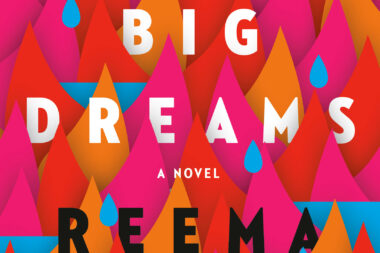“While the streets are dotted with
monotoned Toyotas, Hyundais and Volkswagens
shutting their opaque windows
to the smogs of their own carbonated headline,
Juxtaposed against them are the crawling colour-burst Rickshaws
resembling some staged play or poetry,
an open theatre for the joys of mornings, matinees & moonshine.
A cycled vehicle made for us to lean, rest and resign,
a vehicle that’s everyone’s, a vehicle that’s yours that’s mine”
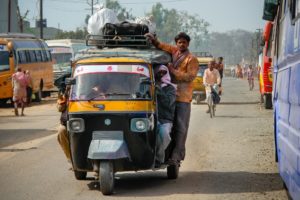 Derived from a Japanese word “jinrikshaa” meaning “human-force-vehicle”, rickshaw or more colloquially pronounced as “ricksaa” is a very popular vehicle in the South Asian countries that runs purely on man-force. Meant to carry people from one place to another, rickshaws form an important source of transportation in South Asian countries, particularly in India. The “ricksaa Gadis” function either on three-tyred cycles or are pulled manually. In both the cases it is the brawns of a man that does the laborious task of driving the vehicle with travelers mounted on them. Reach bus-stops, railway stations, shopping centers, temples, beaches or hotels, one gets ceased by the sight of an army of rickshaws thronging like a school of snails. The rickshaw-pullers or more appropriately the “rickshaw wallahs” are always seen buzzing around to stumble upon that suitable customer who could shell out the most suitable buck. After a series of jarring noise both the driver and the passenger embark upon the slow but sure journey towards a new destination.
Derived from a Japanese word “jinrikshaa” meaning “human-force-vehicle”, rickshaw or more colloquially pronounced as “ricksaa” is a very popular vehicle in the South Asian countries that runs purely on man-force. Meant to carry people from one place to another, rickshaws form an important source of transportation in South Asian countries, particularly in India. The “ricksaa Gadis” function either on three-tyred cycles or are pulled manually. In both the cases it is the brawns of a man that does the laborious task of driving the vehicle with travelers mounted on them. Reach bus-stops, railway stations, shopping centers, temples, beaches or hotels, one gets ceased by the sight of an army of rickshaws thronging like a school of snails. The rickshaw-pullers or more appropriately the “rickshaw wallahs” are always seen buzzing around to stumble upon that suitable customer who could shell out the most suitable buck. After a series of jarring noise both the driver and the passenger embark upon the slow but sure journey towards a new destination.
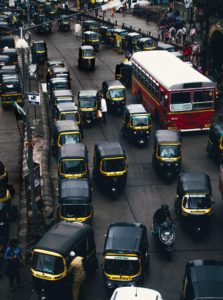 In India, the most common kind of rickshaws is the pedicabs that run on tricycles. Hand-painted, mirror-detailed, movie-poster laden pedicab rickshaws in India are a riot of colours and appear like some rare species of butterfly that can never go extinct. From the outstretched over-flowing streets to the narrow asymmetric alleys, these vibrant vehicles in India meander anywhere, everywhere. They have thick rexin-covered rectangular seats with latched back rest for people to sit and lean on, followed by a flap of curtained window behind the seat to peek at the streets that pass by. The rickshaw-puller adeptly paddles the cycled vehicle on the crowded streets and rings the ‘tin-tin’ bells to make way through the cluster of crowds. A typical “rickshaw wallah”, usually lean, petite and frail, wear knotted cotton fabrics called ‘lungis’ down their waist for agile thigh movement and wrap thin towels called ‘gamuchhas’ on their forehead to shield their heads from the blazing summer sun. These skinny, bonny, ganjee-clad, brown-skinned, veins-protruding “rickshaw wallah bhaiyas” are largely seen halting next to market complexes, cinemas, banks, offices, schools, hospitals and as mentioned earlier bus stops, railway stations and important places of public visit.
In India, the most common kind of rickshaws is the pedicabs that run on tricycles. Hand-painted, mirror-detailed, movie-poster laden pedicab rickshaws in India are a riot of colours and appear like some rare species of butterfly that can never go extinct. From the outstretched over-flowing streets to the narrow asymmetric alleys, these vibrant vehicles in India meander anywhere, everywhere. They have thick rexin-covered rectangular seats with latched back rest for people to sit and lean on, followed by a flap of curtained window behind the seat to peek at the streets that pass by. The rickshaw-puller adeptly paddles the cycled vehicle on the crowded streets and rings the ‘tin-tin’ bells to make way through the cluster of crowds. A typical “rickshaw wallah”, usually lean, petite and frail, wear knotted cotton fabrics called ‘lungis’ down their waist for agile thigh movement and wrap thin towels called ‘gamuchhas’ on their forehead to shield their heads from the blazing summer sun. These skinny, bonny, ganjee-clad, brown-skinned, veins-protruding “rickshaw wallah bhaiyas” are largely seen halting next to market complexes, cinemas, banks, offices, schools, hospitals and as mentioned earlier bus stops, railway stations and important places of public visit.
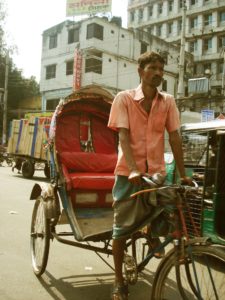 While most of India houses pedicabs or cycle-rickshaws, Kolkata is a home to the more laborious form of vehicle– “the hand-pulled rickshaw”. The capital city of West Bengal, this Bengali-speaking illustrious metropolis in the Eastern belt of India, is probably the only place where the immensely- struggling- breed of Rickshaws still exist. The hand-pulled rickshaws colloquially called as the “tana rickshaw” in West Bengal are as old as 130 years. Their origin can be traced back to the olden pre-independent India’s Zamindari era. During these times of stark rich-poor divide when the elites used to travel in embellished, four-men handled ‘palanquins’, the hand-pulled rickshaw emerged as a feather in the hat for the middle-class milieu. In India having someone to carry you from one place to another was considered a sign of status. Thus, the non-Zamindar middle class folks got a chance to flaunt their class upon having a chauffeur-simulating ‘rickshaw wallah’ with his ‘tana rickshaw’ at their disposal as a private(reserved)means of communication. Although hand-pulled rickshaws, drawn by lungi wearing, bare-chested, thin men, demand an enormous muscle investment, yet they have been sauntering n the city since a century and will continue to crawl around forever. Many people feel a pinch of guilt before boarding them, many consider it inhuman to sit on them and there are many who always end up paying a few extra cents to the rickshaw wallahs in an attempt to compensate for boarding on them. Whatever may be our take on the difficulties of hand-pulled rickshaw, its existence has played a crucial
While most of India houses pedicabs or cycle-rickshaws, Kolkata is a home to the more laborious form of vehicle– “the hand-pulled rickshaw”. The capital city of West Bengal, this Bengali-speaking illustrious metropolis in the Eastern belt of India, is probably the only place where the immensely- struggling- breed of Rickshaws still exist. The hand-pulled rickshaws colloquially called as the “tana rickshaw” in West Bengal are as old as 130 years. Their origin can be traced back to the olden pre-independent India’s Zamindari era. During these times of stark rich-poor divide when the elites used to travel in embellished, four-men handled ‘palanquins’, the hand-pulled rickshaw emerged as a feather in the hat for the middle-class milieu. In India having someone to carry you from one place to another was considered a sign of status. Thus, the non-Zamindar middle class folks got a chance to flaunt their class upon having a chauffeur-simulating ‘rickshaw wallah’ with his ‘tana rickshaw’ at their disposal as a private(reserved)means of communication. Although hand-pulled rickshaws, drawn by lungi wearing, bare-chested, thin men, demand an enormous muscle investment, yet they have been sauntering n the city since a century and will continue to crawl around forever. Many people feel a pinch of guilt before boarding them, many consider it inhuman to sit on them and there are many who always end up paying a few extra cents to the rickshaw wallahs in an attempt to compensate for boarding on them. Whatever may be our take on the difficulties of hand-pulled rickshaw, its existence has played a crucial 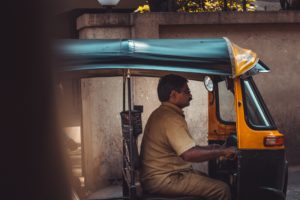 role in the socio-economic evolution of the city since a century. Although the increasing number of rickshaws has been the major contributors to the frenzied traffic issues of the place and though the government has attempted to ban them, yet the city has never been able to eliminate it. “The Calcutta Hackney- Carriage (amendment) Bill, 2006 called for the withdrawal of these rickshaws. Of the 6000 or so sources of livelihood that will be lost, little has been said, apart from promises of rehabilitation.,” says firstpost.com.
role in the socio-economic evolution of the city since a century. Although the increasing number of rickshaws has been the major contributors to the frenzied traffic issues of the place and though the government has attempted to ban them, yet the city has never been able to eliminate it. “The Calcutta Hackney- Carriage (amendment) Bill, 2006 called for the withdrawal of these rickshaws. Of the 6000 or so sources of livelihood that will be lost, little has been said, apart from promises of rehabilitation.,” says firstpost.com.
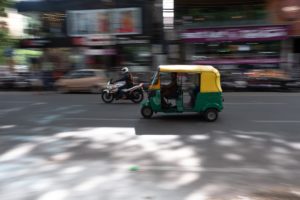 Usually associated with haggles and bargains, the conversation between a prospective rickshaw wallah and a potential customer mostly begins with a dialogue of unsatisfactory negotiations. Gradually it lands on an even number that makes both the parties satisfied. Finally, the driver and passenger sail on the serene wheels of a heart-to-heart conversation. The passenger always reaches his destination relaxed and with an album of the streets etched into his memory bank. As opposed to a frantically fast-paced means of urban transportation, a slowly carved out rickshaw ride in India is surely something to be relished and cherished.
Usually associated with haggles and bargains, the conversation between a prospective rickshaw wallah and a potential customer mostly begins with a dialogue of unsatisfactory negotiations. Gradually it lands on an even number that makes both the parties satisfied. Finally, the driver and passenger sail on the serene wheels of a heart-to-heart conversation. The passenger always reaches his destination relaxed and with an album of the streets etched into his memory bank. As opposed to a frantically fast-paced means of urban transportation, a slowly carved out rickshaw ride in India is surely something to be relished and cherished.




